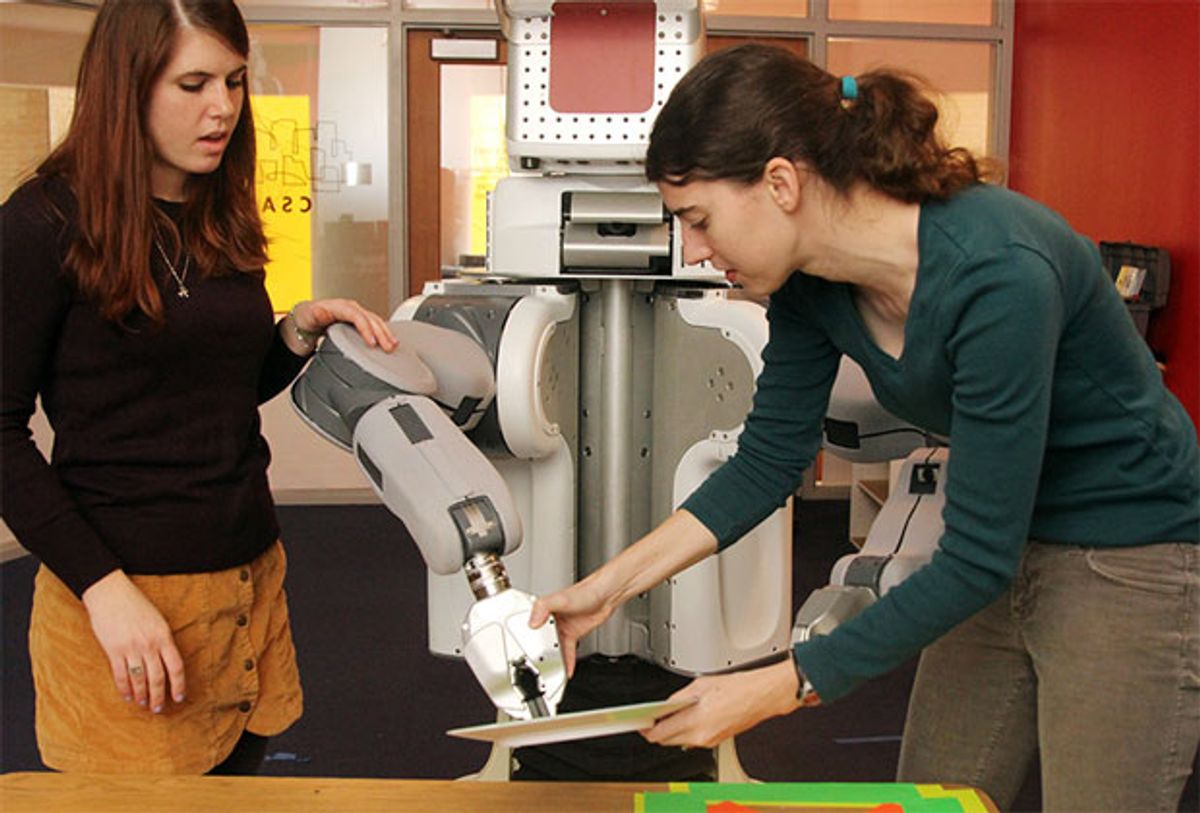If there's one thing that robots are consistently fantastic at, it's failure. Robots are absolutely wonderful at completely screwing up even the most basic of tasks. But the problem isn't the robot, it's the fact that things that humans think of as "basic" tasks are really not basic at all. Part of the reason that we can avoid failure when doing basic things is that we're able to imagine and predict the consequences of our actions, and by giving robots a similar capability, researchers at MIT hope to make them less, you know, fail-y.
Students from the the Learning and Intelligent Systems Group at MIT’s Computer Science and Artificial Intelligence Laboratory are teaching a PR2 to use a little bit of what we humans might call "common sense" when trying to pick up and put down objects, including the use of its other arm to help it deal with especially tricky tasks:
To get this to work, the robot tries to figure out all the ways in which it can possibly screw up at (say) putting an object on a table. Rather than looking for one way to avoid failure, the robot instead embraces failure, and tries to use bits of itself or the environment to reduce as many of those failure opportunities (or "failtunities") as possible. This is something that humans do all the time: we brace things against other things, playing objects off of one another to achieve our objectives.
This is a complicated problem, but it's also an important one: to get robots into our homes, they need to be reliable and adaptable and able to deal with new objects and new situations. They won't have the luxury of being able to take a trial-and-error approach with object interactions; we'll have to have confidence that they won't immediately break all of our good china while trying to load the dishwasher. The only way to make this happen is to have a robot that's acutely aware of the potential for failure, so we're very much looking forward to seeing where MIT takes this.
The researchers will be presenting their results at ICRA 2013 in Germany this May, and we'll be there.
[ LIS ] via MIT ]
Evan Ackerman is a senior editor at IEEE Spectrum. Since 2007, he has written over 6,000 articles on robotics and technology. He has a degree in Martian geology and is excellent at playing bagpipes.



